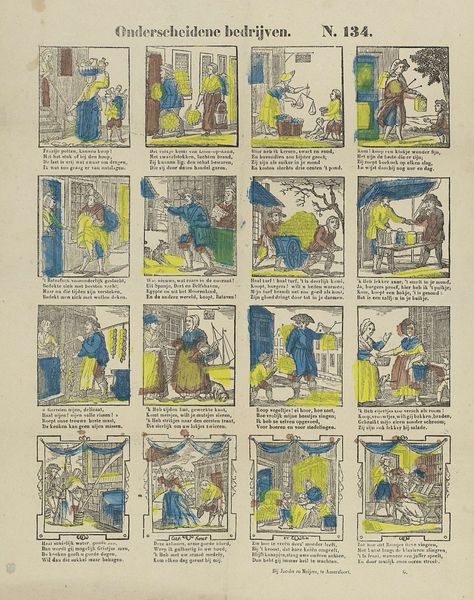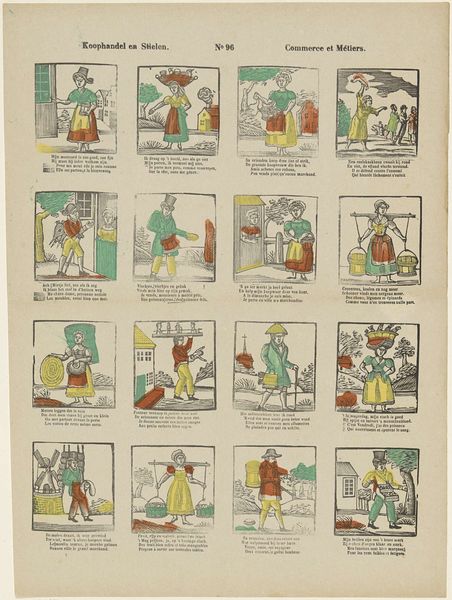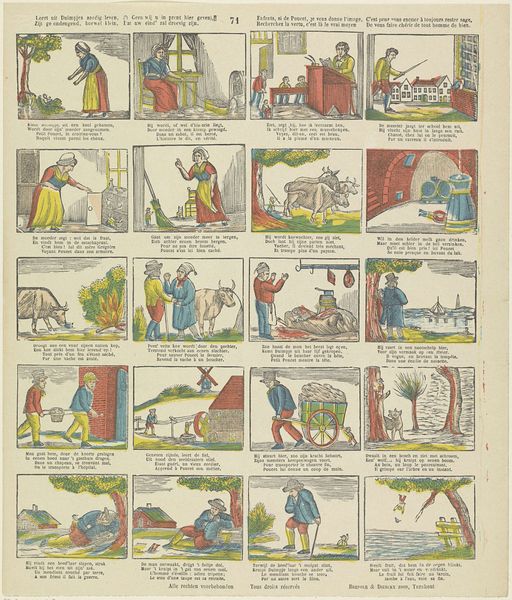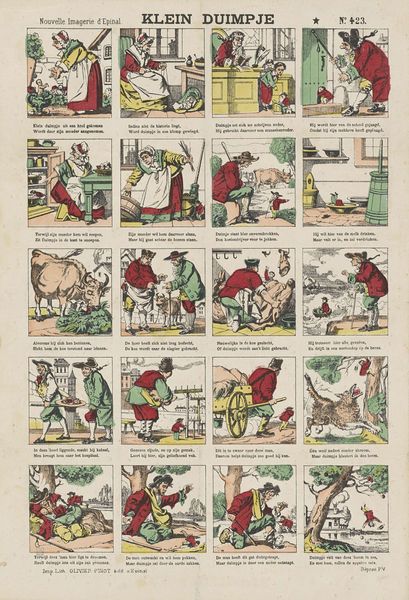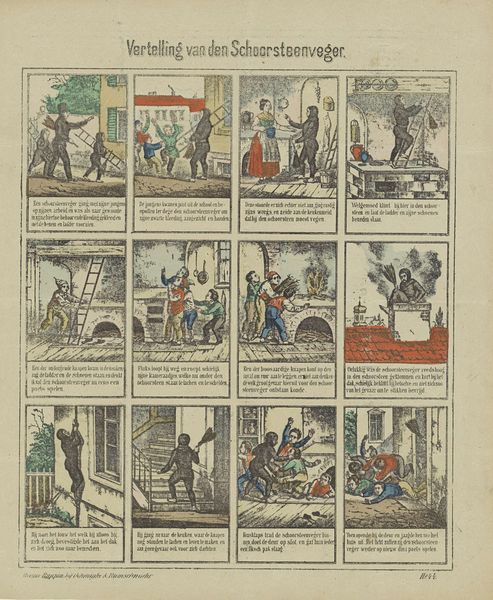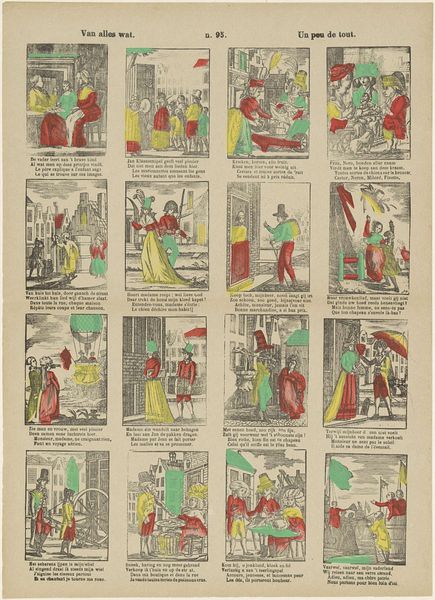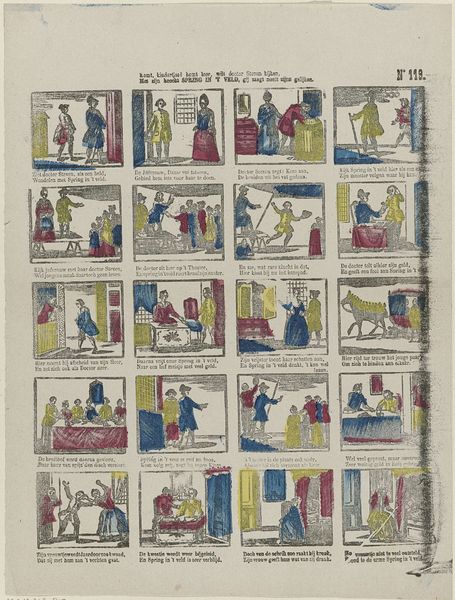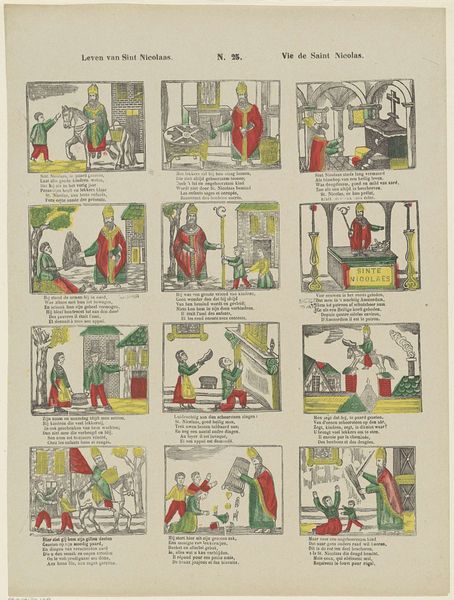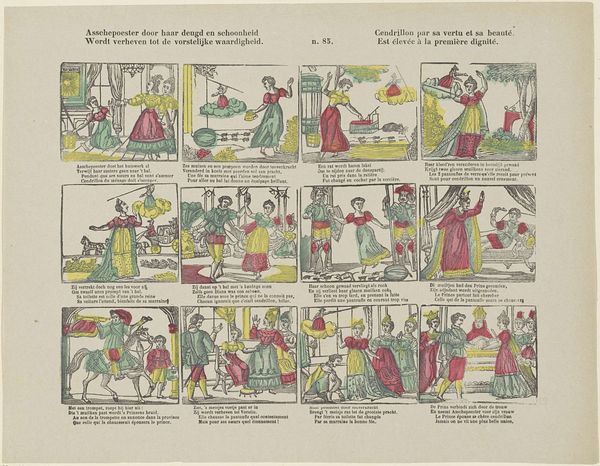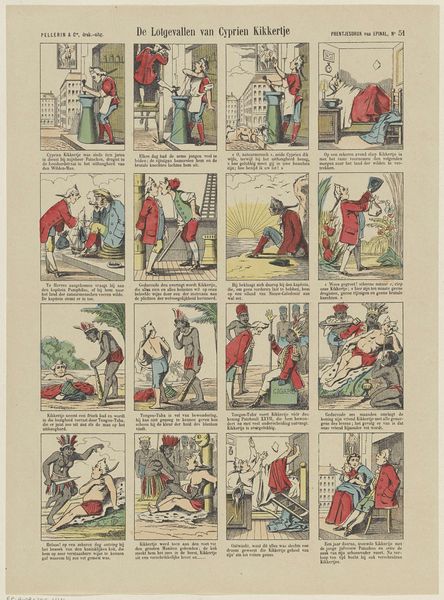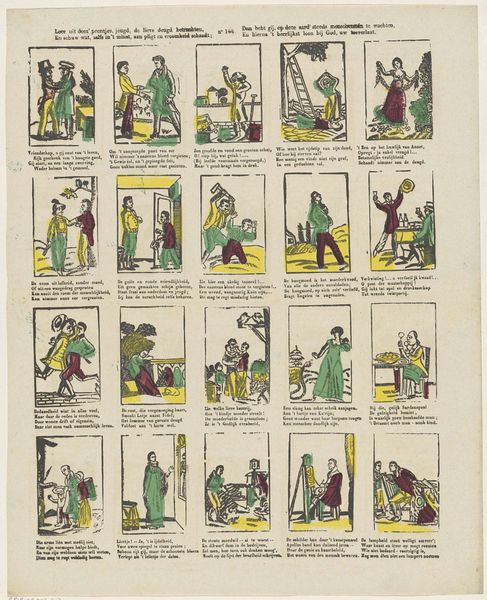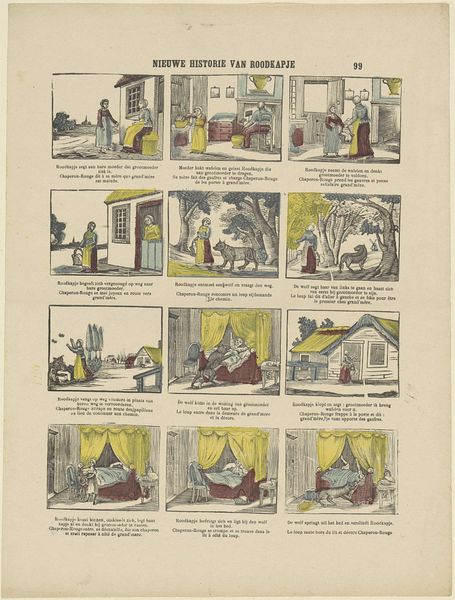
het leven van juffrouw Gaudichon en haren hond, / Zal u dienen tot vermaak terstond (...) 1842 - 1856
0:00
0:00
#
narrative-art
#
comic strip
# print
#
dog
#
comic
#
genre-painting
Dimensions: height 335 mm, width 277 mm
Copyright: Rijks Museum: Open Domain
Curator: Let’s turn our attention to this rather quaint, and slightly confounding, piece titled “Het leven van Juffrouw Gaudichon en haren hond, / Zal u dienen tot vermaak terstond (...)” which translates roughly to "The life of Miss Gaudichon and her dog, / Will serve to amuse you immediately (...)." It was created sometime between 1842 and 1856 by P.J. Delhuvenne. Editor: Immediately I am struck by the panel-like format. It's presented in a grid, filled with cartoonish scenes. There's a rather episodic narrative structure, presented in a distinctly childlike aesthetic with its basic colors and the simplified figures. Curator: Precisely. This is, in essence, a proto-comic strip. Notice how Delhuvenne pairs simple illustrations with text, recounting a series of humorous vignettes about Miss Gaudichon and her dog, Zolo, in a kind of lighthearted social commentary. Editor: The panels indeed read as miniature theatrical productions. We witness snippets of domestic life, with a satirical edge—Zolo getting into trouble, Miss Gaudichon occupied with household tasks. Note, particularly, the overt gendering, where a women's interior world of domesticity becomes almost clownish. The relationship between women and pets has had long roots! Curator: Semiotically, we might consider the recurring motifs. The hat, for instance, shows up repeatedly on both Miss Gaudichon and Zolo. The colors are not uniformly applied and it seems to me to be playing with expectations of spatial depth, creating some ambiguity as to what recedes into the background and what comes forward. Editor: What is also interesting is the language mixing between Dutch and French, further cementing a social positioning for these "entertainments" in the domestic sphere. Also, how might we see that “noble Dame” also occupies her time riding goats like an old crone? There is certainly class critique embedded here, too! Curator: An interesting thought! I think overall, though, it serves more as an accessible and amusing form of narrative art. This is not the formal oil painting of the academy. Instead, we have the democratization of images that were once confined to more upper-class domains. Editor: A very fair point. Overall, what resonates most for me is the idea of domestic spaces being arenas for enacting societal conventions, both subverting and reinforcing prevailing stereotypes through satire and accessible printmaking practices. Curator: For me, the artistic qualities stand apart in their directness, embracing accessible themes in simplified graphic language, offering us a unique visual window into early comic sensibilities.
Comments
No comments
Be the first to comment and join the conversation on the ultimate creative platform.
